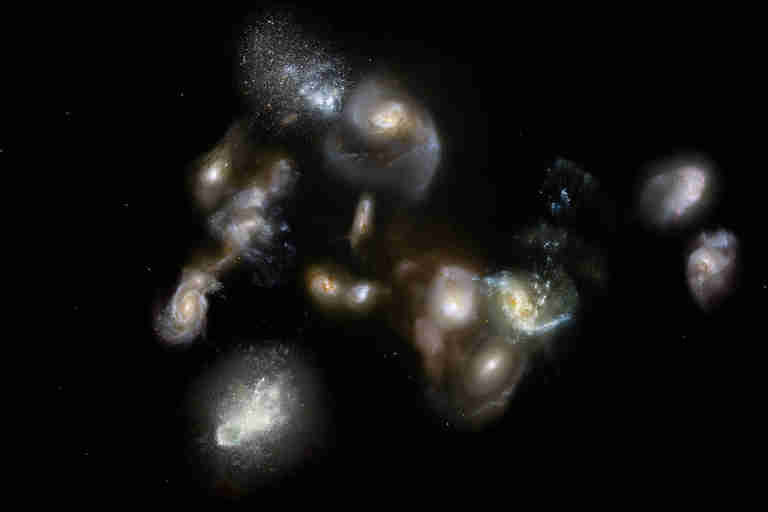From Cardiff University at Eurekalert:
The birth of stars from dense clouds of gas and dust may be happening in a completely unexpected way in our own galaxy and beyond.
This is according to an international team of researchers, including scientists from Cardiff University, who have found that long-held assumptions about the relationship between the mass of star-forming clouds of dust and gas and the eventual mass of the star itself may not be as straightforward as we think.
The underlying reasons as to why a star eventually grows to a specific mass has puzzled scientists for some time.
It has been assumed that a star’s mass mostly depends on the original structure – known as a star-forming core – from which stars are born.
…
To their surprise, the distribution of star-forming cores was completely different to what had previously been observed in nearby regions of the Milky Way.
In particular they observed an abundance of extremely big stars with huge masses, but less smaller stars that are more common within our galaxy.
Co-author of the study Dr Kenneth Marsh, from Cardiff University’s School of Physics and Astronomy, said: “These findings were a complete surprise and call into question the intricate relationship between the masses of star-forming cores and the masses of the stars themselves, which has long been assumed.” More.

Also: From Doris Elin Salazar at Space.com,
Astronomers report witnessing the formation of a galaxy cluster — the largest type of gravity-bound structure in the universe. And it’s not what they expected.
To study the formation stage the protocluster was exhibiting, researchers ran observational data from the ALMA telescope through computer simulations. The two teams found that what they were witnessing occurred less than 1.4 billion years after the big bang. However, existing theoretical and computer models suggest that a protocluster as large as SPT2349-56 should have taken much longer to evolve.
“How this assembly of galaxies got so big, so fast is a mystery,” Tim Miller, a doctoral candidate at Yale University and lead author of one of the papers, said in the statement. “It wasn’t built up gradually over billions of years, as astronomers might expect. This discovery provides a great opportunity to study how massive galaxies came together to build enormous galaxy clusters.”
Paper. The Formation of a Massive Galaxy Cluster Core at z = 4.3 (open access)
Paper. An Extreme Proto-cluster of Luminous Dusty Starbursts in the Early Universe (open access)
File under: The science is never settled.

See also: Textbook theory of moon’s origin is challenged
Space.com: Scientists finally know how old Moon is What’s surprising, really, is how little we know about the moon in general.
Another moon origin theory: Epic crash
How the Moon Formed: 5 Wild Lunar Theories (Mike Wall at Space.com, 2014)
Our moon formed in collision with embryo planet?
and
Origin of the moon still shrouded in mystery